#chromolithography
Text


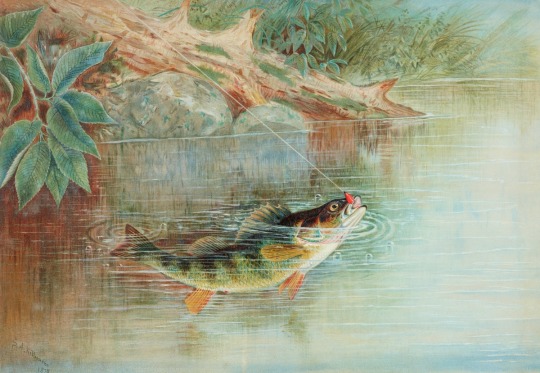
Samuel Kilbourne (American, 1836–1881)
"The California Salmon" (ca. 1879)
"Leaping Brook Trout" (1874)
"Yellow Perch" (1878)
#Samuel Kilbourne#art#american art#print#chromolithography#chromolithograph#lithography#lithograph#illustration#illustrations#animals in art#fish#marine life#marine art#aquatic life#aquatic art#sea life#19th century art#19th century#art history
1K notes
·
View notes
Text

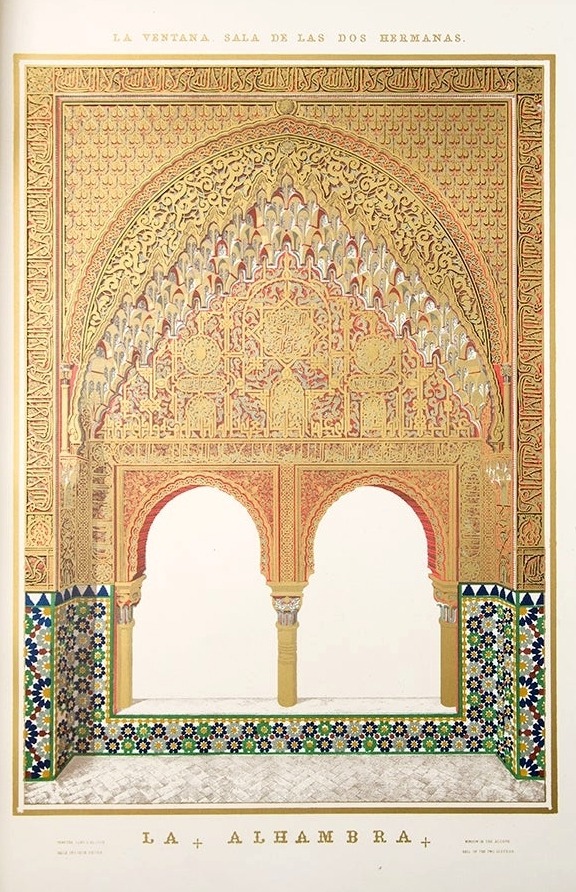
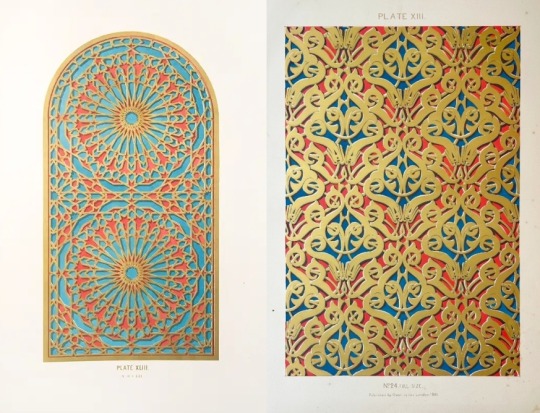
NOW ON VIEW IN SPECIAL COLLECTIONS
Plans, Elevations, Sections, and Details of the Alhambra
In exploring the Arts Collection for our rare book exhibit, curators Heather and Maya came upon the incredibly detailed and stunning lithographs and engravings in Jules Goury and Owen Jones's Plans, Elevations, Sections, and Details of the Alhambra. Through further research, we learned that this 2-volume set, published in London between 1842 and 1845, was one of the first published books to use the technique of chromolithography, a process that later dominated color reproduction for most of the second half of the 19th century. The set is also an important historical record of the Alhambra, created from drawings done at least twenty years before the first detailed photographic records were made. In 1836, while preparing the original drawings, Jules Goury died of cholera in Granada. This left Owen Jones with the complicated task of finding a printer capable of carrying out the work. He finally resolved to set up his own printing press. The experimental color printing process required up to seven pressings and nearly nine years of trial and error before the work was successfully completed. Jones’s flat colors anticipated the work of William Morris, the Pre-Raphaelites, and the Art Nouveau movement.
Due to its monumental size, we couldn't include this bound set in our exhibit, but it's now on view in the Special Collections reading room along with other portfolios of leaves in the exhibit. The exhibit runs through November 29, but the material in the reading room will be available to view through 2023.
#rare books#chromolithography#Alhambra#HCL Arts Collection#art books#book exhibits#19th century printing#printing process#lithography
89 notes
·
View notes
Text

Wishing You a Prosperous and Happy New Year, chromolithograph postcard by unknown artist, ca. 1913
#New Year#New Years#New Years Day#Happy New Year#art#art history#postcard#chromolithography#American art#20th century art#Missouri History Museum
73 notes
·
View notes
Text

Tobogganing, winter sport in The Victorian Era, chromolithograph by Henry "Hy" Sandham, 1886.
Tobogganing, the sport of sliding down snow-covered slopes and artificial-ice-covered chutes on a runnerless sled called a toboggan. In Europe, small sleds with runners are also called toboggans.
#henry sandham#hy sandham#1886#hy#christmas#christmas illustration#chromolithograph#chromolithography#Tobogganing#winter#winter activity#snow#snow activity#activity#victorian era#victorian#the victorian era#henry hy sandham
59 notes
·
View notes
Text
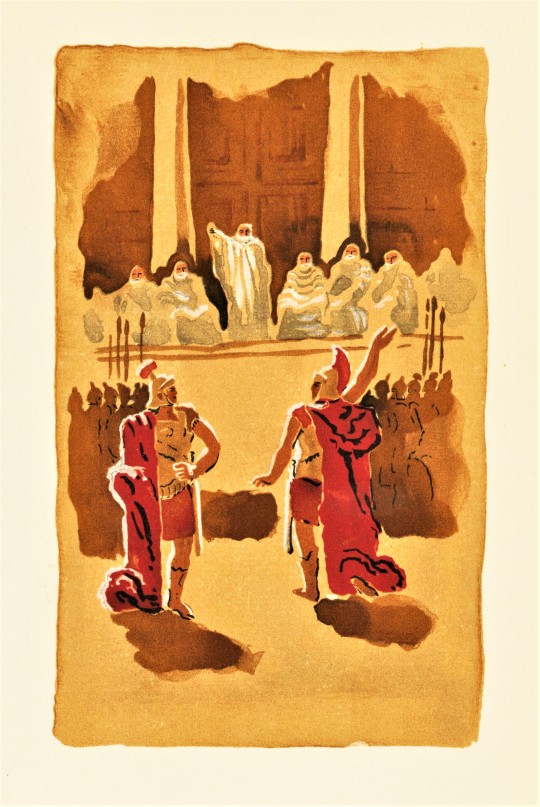



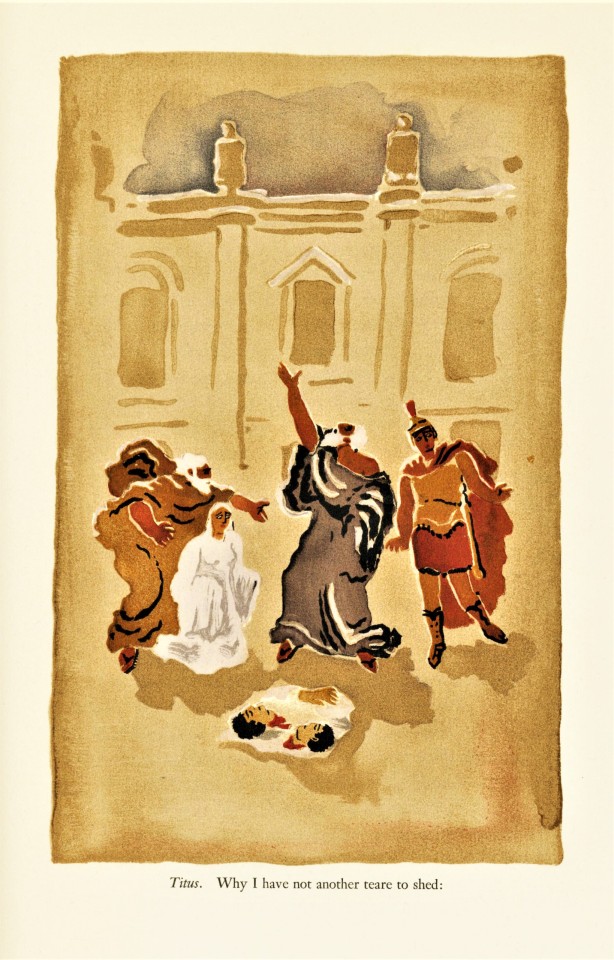
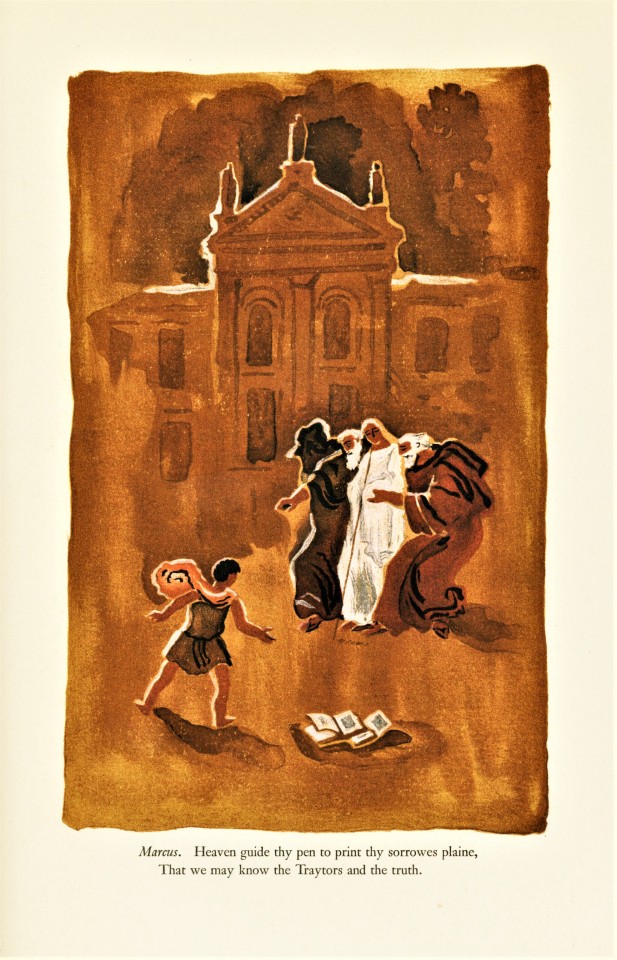

Shakespeare Weekend
This weekend we look at Shakespeare’s first tragedy, Titus Andronicus the thirty-third volume of the thirty-seven volume The Comedies Histories & Tragedies of William Shakespeare, published by the Limited Editions Club (LEC) from 1939-1940. The play was written between 1588 and 1593 and published three times in quarto before being included in the 1623 First Folio. Known as Shakespeare’s most violent and bloody play, Titus Andronicus was met with criticism throughout the 17th, 18th, and 19th centuries before regaining interest in the 20th century, culminating in Julie Taymor's quirky 1999 film adaptation Titus. Nevertheless, the play is still regarded as one of Shakespeare's most reviled plays.
Nikolai Fyodorovich Lapshin (1891-1942) illustrated the LEC’s edition of Titus Andronicus with his fresco-esque paintings. Lapshin was born in St. Petersburg and was a member of the Leningrad Union of Artists and was known for his watercolor landscapes and numerous children's book illustrations. His muddied scenes depicted throughout Titus Andronicus wonderfully capture the dolor and violence of the play set against a Roman landscape. To preserve Lapshin’s bold brush strokes and nuanced layers, LEC reproduced his images for the publication through chromolithography. The resulting depth and drama of the illustrations perfectly assist readers in imagining the grisly tragedies of the play.
The volume was printed in an edition of 1950 copies at the Press of A. Colish. Each of the LEC volumes of Shakespeare’s works are illustrated by a different artist, but the unifying factor is that all volumes were designed by famed book and type designer Bruce Rogers and edited by the British theatre professional and Shakespeare specialist Herbert Farjeon. Our copy is number 1113, the number for long-standing LEC member Austin Fredric Lutter of Waukesha, Wisconsin.
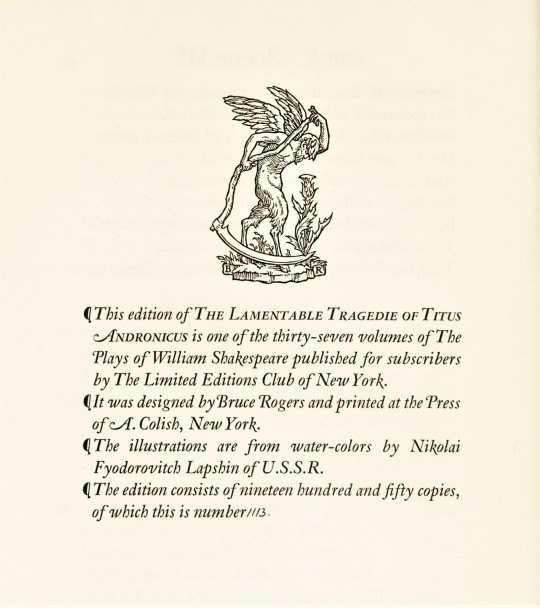
View more Limited Edition Club posts.
View more Shakespeare Weekend posts.
-Jenna, Special Collections Graduate Intern
#shakespeare weekend#shakespeare#limited edition club#lec#titus andronicus#nikolai fyodorovitch lapshin#press of a. colish#bruce rogers#herbert farjeon#chromolithography#Yay chromoliths!
78 notes
·
View notes
Text
@book_historia
19 notes
·
View notes
Text
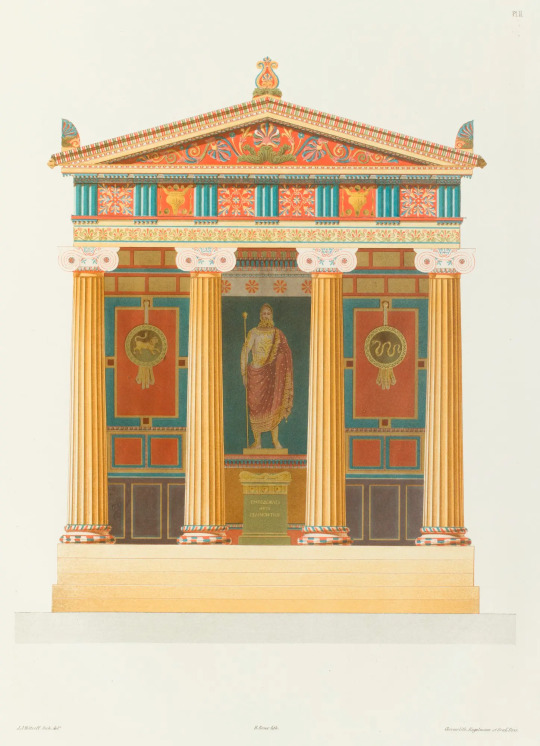


These chromolithographs by Jakob Ignaz Hittorff, a German-born French architect of the 18th century, are based off archeological data from different Ancient Greek ruins. They are meant to show how truly diverse and unique the color patterns of the Ancient Greek temples were - much more unusual than the stark-white of the colorless marble.
While of course this is but one of the options and not at all a definitive picture of the Ancient world, Hittorff made a rather compelling case.
This particular example depicts the main entrance into the temple, its inner cross section, and the side view.
The rest of the collection resides in the Royal Academy of Arts and can be viewed here: 🏺
#ancient history#jacob ignaz hittorff#ancient temple#ancient greece#greek temple#color reconstruction#chromolithography#HISTORIA 📔
51 notes
·
View notes
Text


"Chromolithographs of Paper Lanterns (ca. 1880)" from the always-excellent @publicdomainreview.
16 notes
·
View notes
Text

'Winter's Enjoyment in Central Park'
George Blair
ca. 1890
#vintage#retro#art#history#winter#Christmas#december#winter solstice#illustration#nature#19th century#chromolithography#snow#fashion#skating#painting#George Blair#new york#central park#1800s#1890
16 notes
·
View notes
Photo

Le Château d'Eau et le Palais de l'Électricité, effet de nuit, Exposition Universelle de Paris
1900
#Exposition Universelle#Paris#France#1900#postcard#photography#photochrome#chromolithography#architecture#history
183 notes
·
View notes
Text
These chromolithographs were originally created for various "Book of Hours," a type of Christian prayer book, that contained prayers to recite at different times of day. While these pieces are undated, chromolithography was popular throughout the 19th century until cheaper printing methods became more popular in the 1930s.
18 notes
·
View notes
Text




Samuel Kilbourne (American, 1836–1881)
"Spanish Mackerel" (1878)
"Northern Red Snapper"
"Atlantic Salmon" (1878)
"Arctic Grayling" (1880)
#Samuel Kilbourne#art#american art#print#chromolithography#chromolithograph#lithography#lithograph#illustration#illustrations#animals in art#fish#marine life#marine art#aquatic life#aquatic art#sea life#19th century art#19th century#art history
683 notes
·
View notes
Text

LITTLE PUSSY-CAT by Fred E. Weatherly. (London: Hildesheimer & Faulkner, 1886) Illustrations and book design by Mary Ellen Edwards.
#illustrated books#children’s book#book cover#old books#books books books#book blog#beautiful books#books#victorian era#chromolithography
2 notes
·
View notes
Video
n216_w1150 by Biodiversity Heritage Library
Via Flickr:
Favourite flowers of garden and greenhouse /. London and New York :Frederick Warne & co.,1896-97.. biodiversitylibrary.org/page/36399012
#19th century#Chromolithography#Floriculture#France#Icones#Plants#Ornamental#Missouri Botanical Garden#Peter H. Raven Library#bhl:page=36399012#dc:identifier=http://biodiversitylibrary.org/page/36399012#flickr#coleus#botanical illustration#scientific illustration#hybrid coleus
1 note
·
View note
Text
#FineArtFriday: Christmas Eve, Chromolithograph by Joseph C. Hoover & Sons (revisited)
Description: Christmas Eve, chromolithograph by J. C. Hoover and Sons
Date: 1880
This is a quintessential calendar or Christmas card picture, and I love it. It appeals to every sentiment a viewer might have of home and community and Christmas traditions.
This painting has many nostalgic style elements, which is why I find it so appealing. It has a Courier and Ives feel to it, and is reminiscent…
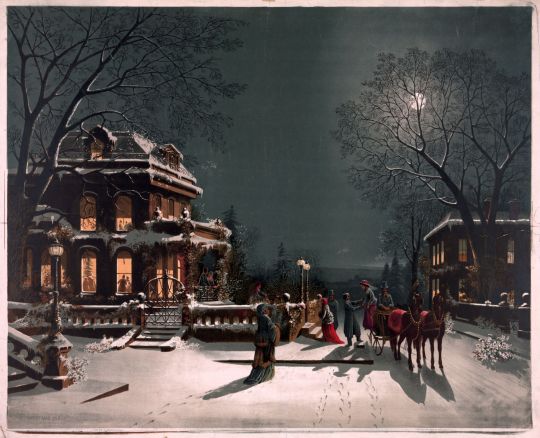
View On WordPress
#19th century art#calendar art#Christmas Eve Chromolithograph by Joseph C. Hoover & Sons#Chromolithography#J.C. Hoover & Sons
0 notes
Text
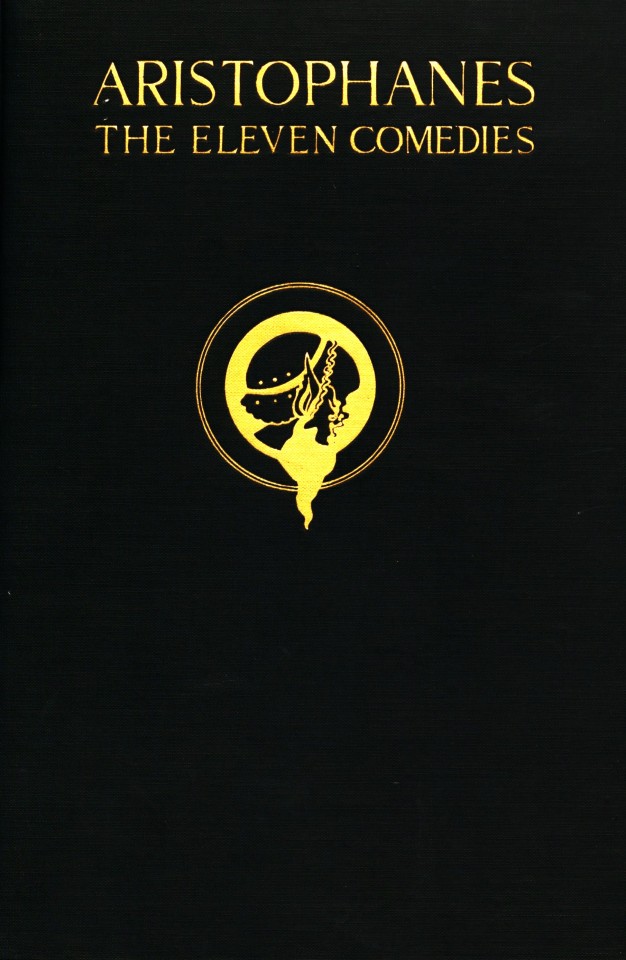
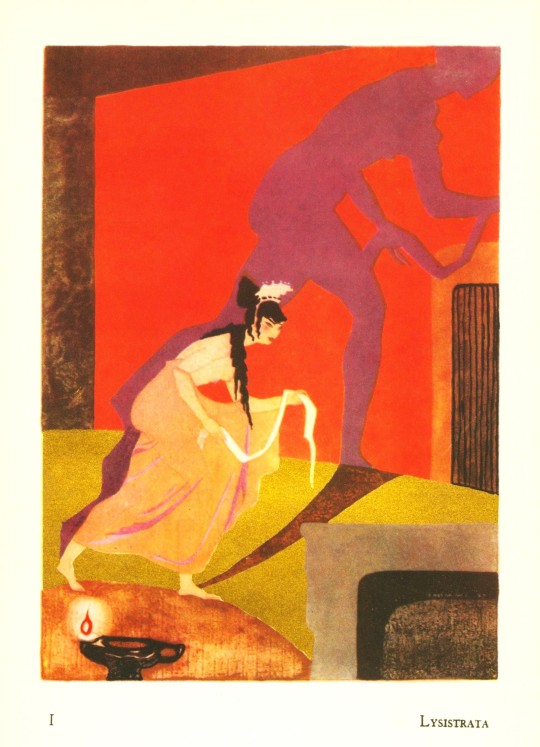
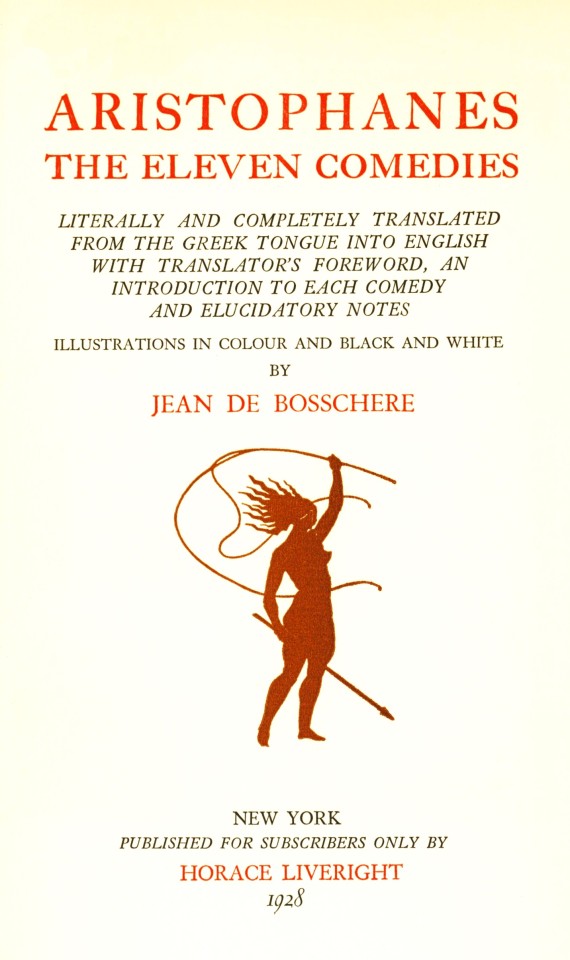



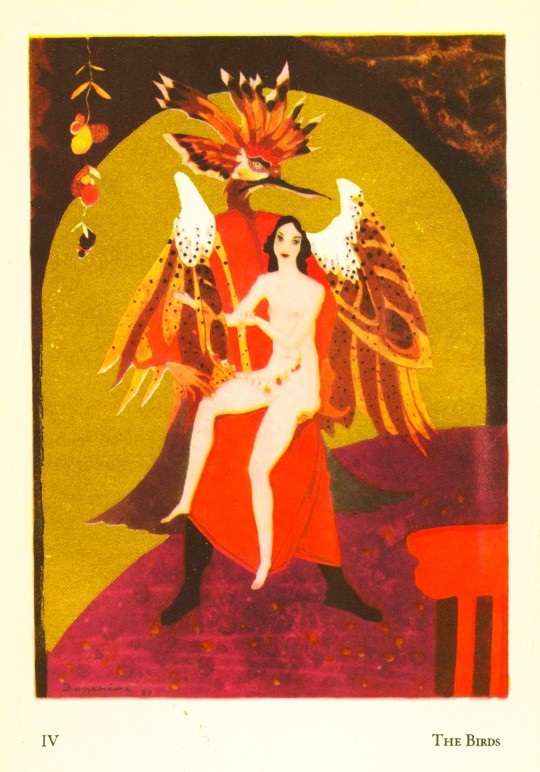
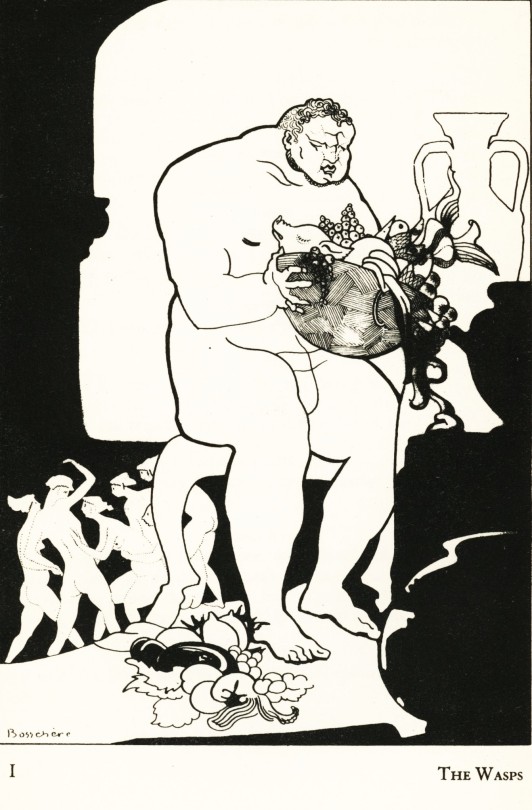

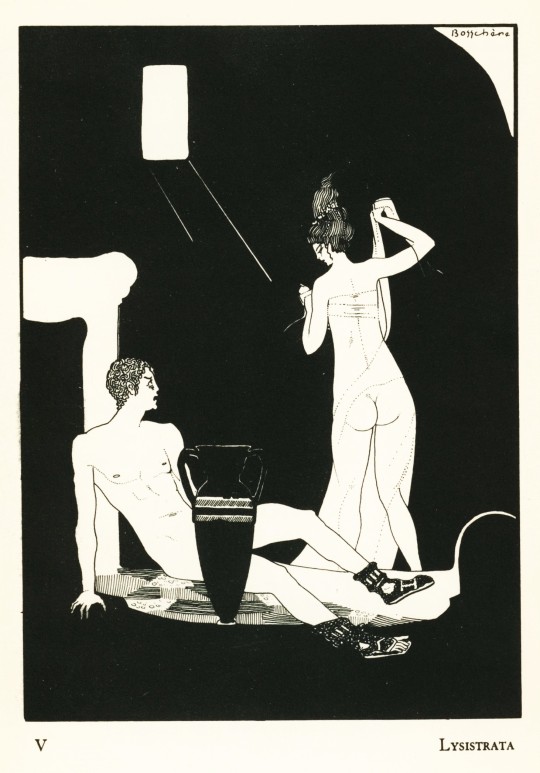
Classics Spotlight
This 1928 edition of The Eleven Comedies by Aristophanes was published by American publisher Horace Liveright in a limited edition of 2050. While the translator is unknown, the work was translated from its original Greek to English. Originally published by the Athenian Society, a renowned literary society in London, in 1912, this edition was exclusively available to its subscribers.
It consists of two volumes with chromolithographic plates as well as black and white illustrations created by Belgian artist Jean de Bosschere. His artwork brings the characters and scenes of the comedies to life, enhancing the reader's engagement with the text.
Aristophanes, a playwright from late 5th-century Athens, was known as the "Father of Comedy" for his significant contributions to the genre. His plays, characterized by their satirical and often political nature, set the standard for comedic writing and continue to inspire modern comedians and playwrights.
-- Melissa, Special Collections Classics Intern
View other Classics posts.
#Classics Spotlight#classics#Aristophanes#Jean de Bosschere#Horace Liveright#ancient greece#Athenian#Athens#comedy#the birds#the frogs#the wasps#the clouds#the knights#the acharnians#lysistrata#Old Comedy#chromolithography#Yay chromoliths!#Melissa
47 notes
·
View notes